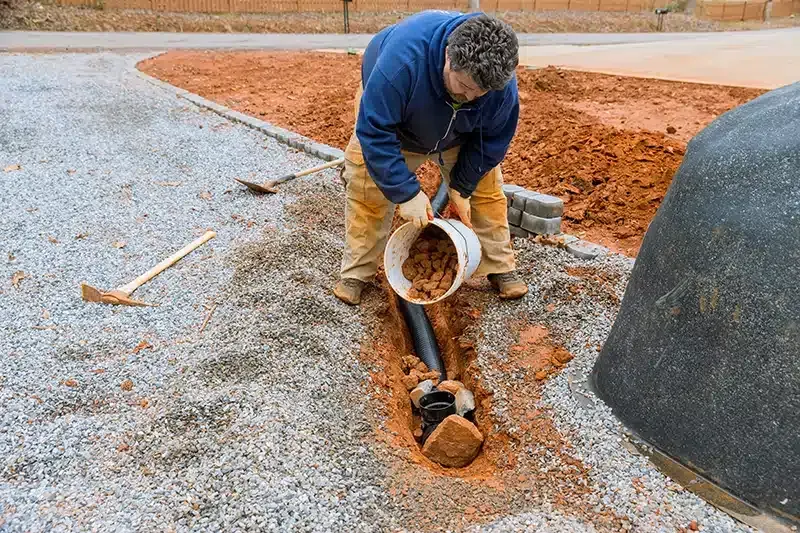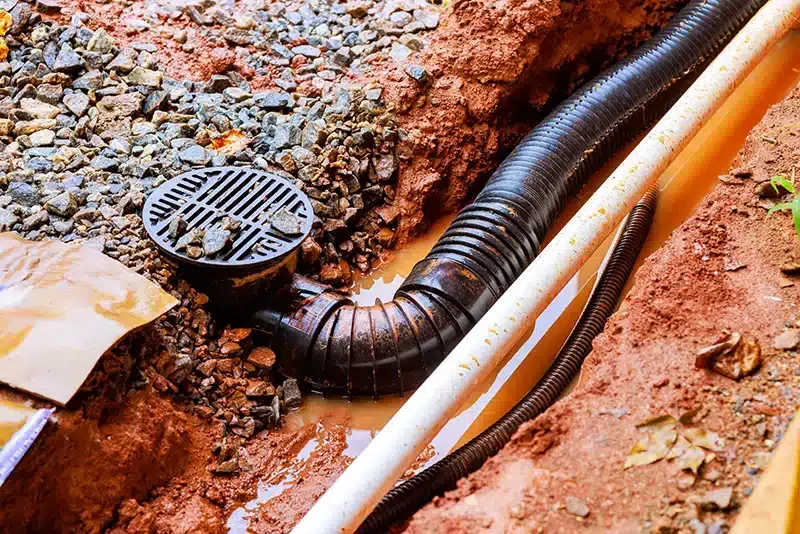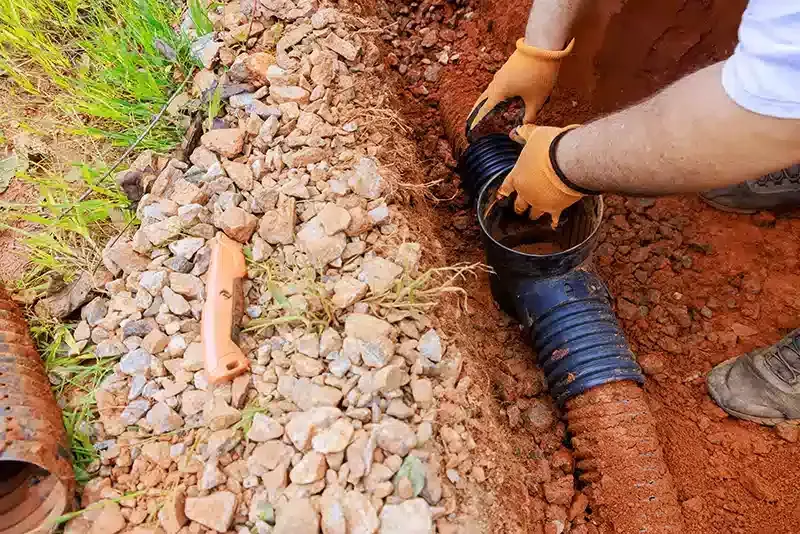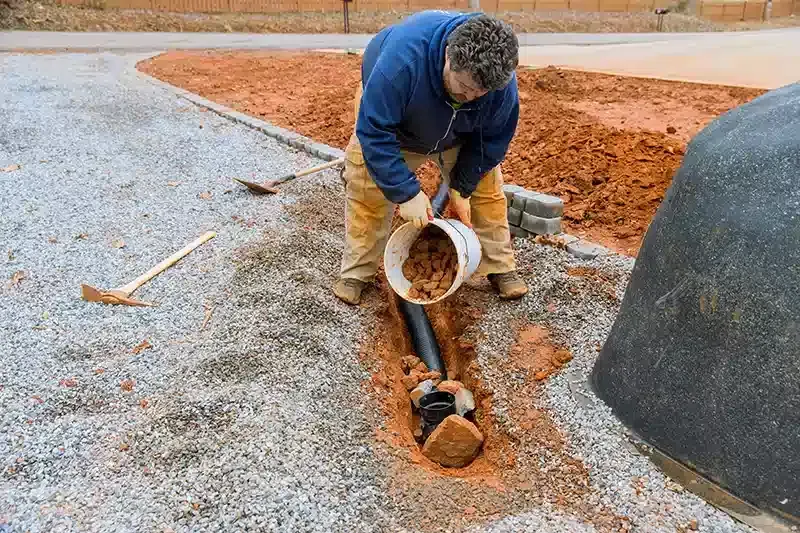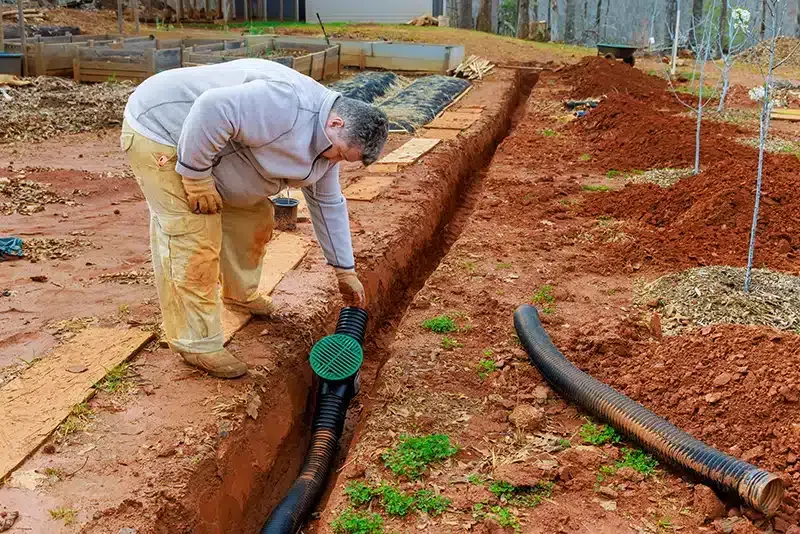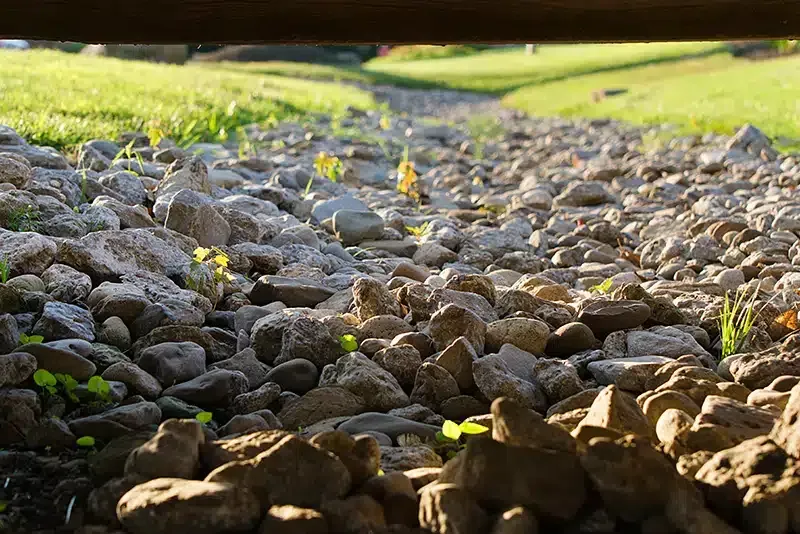Why Should You Consider Installing a French Drain in Your Yard
If you've noticed water pooling in your yard or around your foundation, you might want to consider the benefits of installing a French drain.
This drainage solution can effectively manage excess water, protecting your home from potential damage.
Not only does it help maintain your landscape's integrity, but it can also enhance your property value.
However, before you decide, it's important to understand the installation process and maintenance involved, which could influence your choice in a significant way.
Curious about how this system works and its long-term advantages?
Benefits of Installing a French Drain
French drains offer a highly effective solution for managing water drainage around your property, providing numerous benefits for both your home and your landscape.
Reduced Risk of Water Damage
- Foundation Protection: French drains effectively redirect water away from your home's foundation, significantly reducing the risk of basement flooding, water seepage, and subsequent damage.
- Mold Prevention: By minimizing moisture accumulation, French drains help prevent the growth of mold and mildew, which can pose serious health risks.
Enhanced Yard Drainage
- Eliminate Standing Water: French drains efficiently remove excess water, preventing the formation of unsightly and potentially hazardous puddles in your yard.
- Improved Aesthetics: A well-drained yard enhances the overall appearance and usability of your outdoor space.
- Protect Landscaping Investments: By preventing soil erosion and ensuring adequate drainage for plants, French drains protect your landscaping investments.
Increased Property Value
- Address Potential Issues: By proactively addressing potential water-related issues, French drains can significantly increase the value of your property.
- Peace of Mind: Knowing your home and property are protected from water damage provides long-term peace of mind.
By investing in a French drain, you're making a proactive decision to protect your home and property from the detrimental effects of excess water.
French Drain Installation: A Step-by-Step Guide
Installing a French drain requires careful planning and execution to ensure optimal performance.
Here's a step-by-step guide to the installation process:
Planning and Preparation:
- Identify Water Accumulation Areas: Carefully observe your property to identify areas where water tends to pool or accumulate.
- Mark the Trench Path: Mark the path of the trench with a slight slope (approximately 1%) to direct water flow towards the designated outlet. This ensures efficient water drainage.
Trench Excavation:
- Dig the Trench: Excavate a trench with a width of approximately 6 inches and a depth of 18-24 inches.
- Remove Obstructions: Remove any rocks, roots, or other debris from the trench to ensure proper drainage flow.
Install the Drainage System:
- Line with Landscape Fabric: Line the trench with landscape fabric, allowing enough excess length to fold over the top. This prevents soil from clogging the drain and ensures long-term functionality.
- Add Gravel Base: Place a layer of gravel at the bottom of the trench to provide a stable base for the drain pipe.
- Install Perforated Pipe: Place the perforated PVC pipe in the trench with the holes facing downward.
- Cover with Gravel: Cover the pipe with another layer of gravel, filling the trench to within 2-3 inches of the surface.
Backfill and Finish:
- Fold Landscape Fabric: Fold the excess landscape fabric over the gravel layer to prevent soil from entering the drain.
- Backfill the Trench: Backfill the trench with soil or sod to seamlessly integrate the drain into the surrounding landscape.
Outlet Placement: Ensure the outlet directs water away from the foundation and into a suitable drainage area, such as a storm drain or a dry well.
This is a general guide. It's always recommended to consult with a professional landscaper or contractor for proper installation and to ensure compliance with local building codes.
Maintaining Your French Drain for Optimal Performance
Proper maintenance is crucial to ensure your French drain continues to function effectively and provide long-term protection for your property.
Regular Maintenance Checks:
- Inspect the Drain Outlet: Regularly inspect the drain outlet for any debris such as leaves, dirt, or other obstructions. Clear any blockages to maintain proper water flow and prevent potential flooding issues.
- Monitor Gravel Cover: Regularly inspect the gravel layer around the drain for any sediment buildup. Sediment accumulation can reduce the drain's effectiveness.
- Flush the Drain: Consider flushing the drain with water, especially before the rainy season, to remove any accumulated sediment.
Preventative Measures:
- Manage Surrounding Vegetation: Trim back any plants or trees growing too close to the drain. Tree roots can grow into the drain and cause blockages, while dense vegetation can impede water flow.
- Observe Drainage Performance: After heavy rainfall, carefully observe the drainage performance of the system.
Addressing Potential Issues:
- Identify and Address Problems: If you notice any signs of poor drainage, such as standing water or increased moisture around the foundation, consult with a professional to diagnose and address the issue promptly.
By implementing these maintenance tips, you can ensure your French drain continues to function effectively, protecting your home and property from water damage for years to come.
Investing in a French drain is a proactive step towards safeguarding your property from the adverse effects of water accumulation.
With proper installation and regular maintenance, this system can efficiently redirect water, protect your home’s foundation, and preserve the beauty of your landscape.
By addressing potential drainage issues early, you enhance your property’s value and enjoy peace of mind knowing your home is well-protected against water damage for the long term.
